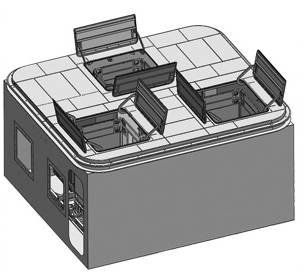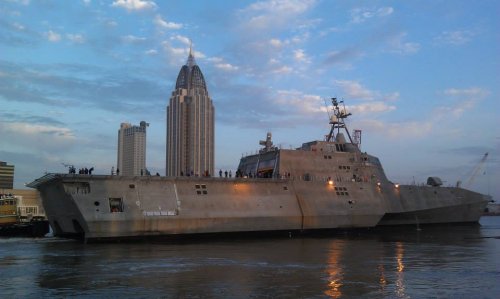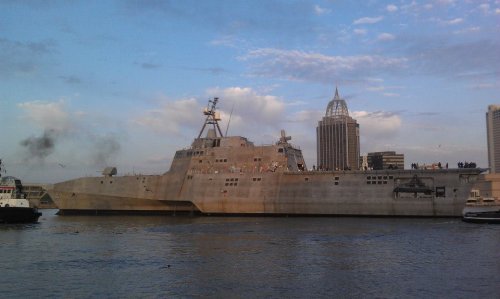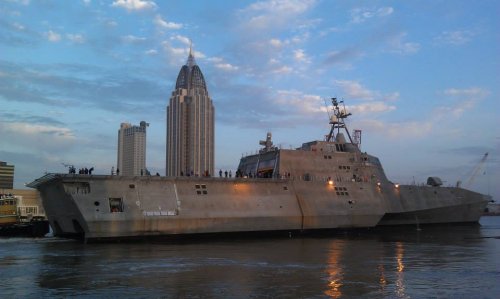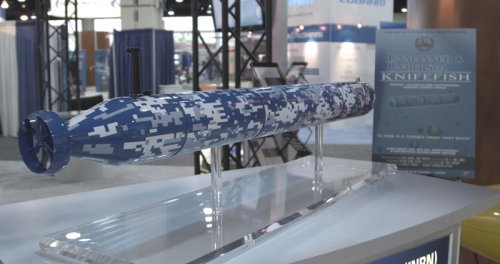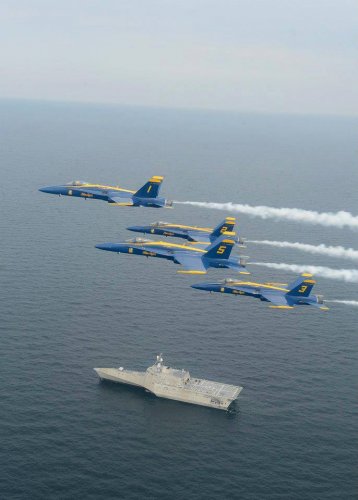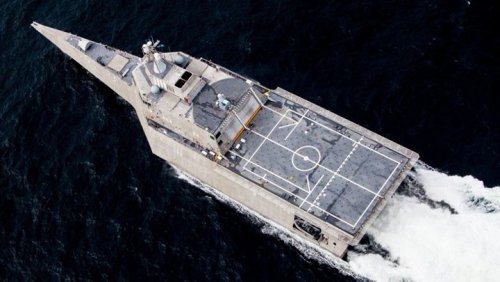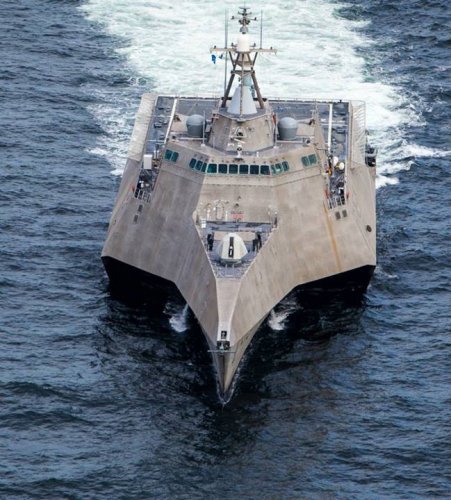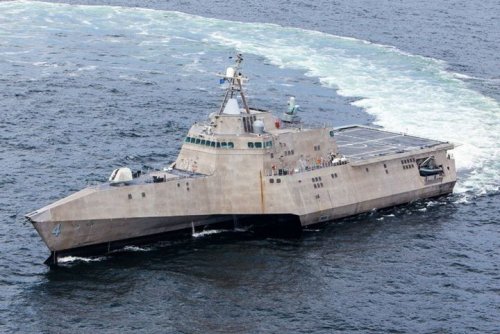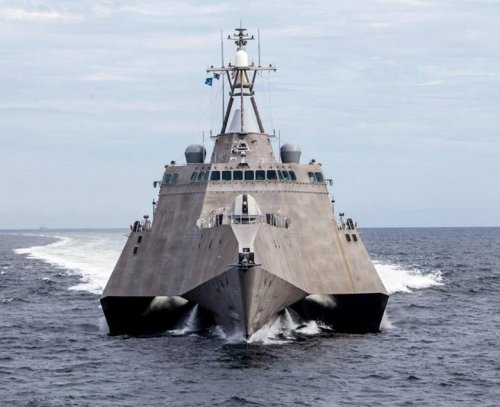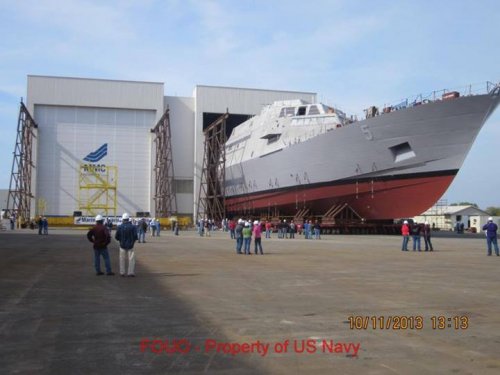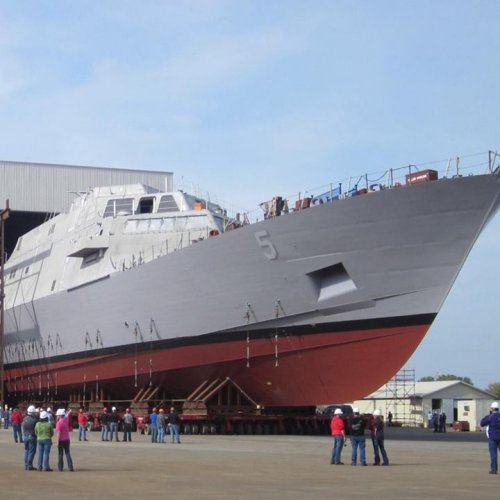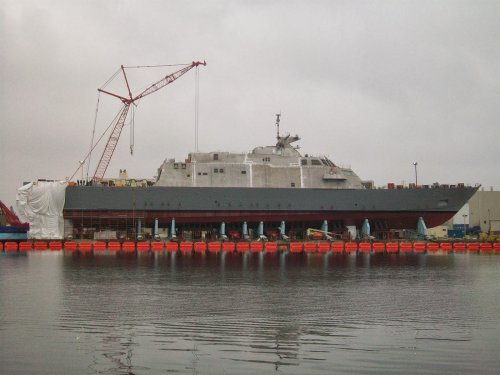Do not compare LCS to current platforms. It cannot be manned, trained, equipped, or maintained or tactically employed in the same way. NO OLD THINK.”
- -- 2008 U.S. Navy LCS Cardinal Rules (Emphasis in original)
The biggest impediment to the potential success of the U.S. Navy’s Littoral Combat Ship (LCS) may very well be some of the top-level brass who continue to view the ship through the “old-think” prism used to scrutinize traditional Navy warships.
Whether the Navy achieves operational or acquisition success with LCS remains to be seen. There is still no production-model ship at sea yet with which to gauge cost and tactical effectiveness.
But we do most definitely have a ship that is designed to be operated far differently than any other warship before it. At the high-altitude conceptual level, that is precisely what the Navy wanted.
The Navy’s desires for this different kind of warship are spelled out not only in the “Cardinal Rules,” as cited above, but also in the initial LCS concept of operations (conops), Required Operational Capabilities (Roc) And Projected Operational Environment (Poe), a list of required waivers from warship manning and other requirements, and even its damage-control manual.
I’ve reviewed all of these documents, which date back to the previous decade – as the first ships were being built – and they detail clearly just how differently the LCS vessels are meant to be operated in the Navy fleet compared to the nation’s traditional surface combatants.
Consider some more of the cardinal rules: do not covet simultaneous multi-mission capability; manpower is a constraint – view it as an aircrew (who only operate but do not maintain their aircraft); and, do not deviate and make policy decisions that don’t match capability.
The lack of the same multi-mission capability that other surface ships are known for is a biggie– most Navy warships are designed to go out and face a host of threats at any given time. That’s not the LCS role, as envisioned. And, as the LCS conops says, the ships are “not designed to operate in a high-intensity air defense environment.” Instead, as the Roc & Poe says, the ships’ “mission is to operate offensively in a high density, multi-threat littoral environment.”
There is a world of difference between a “high-intensity air-defense” scenario – the kind a destroyer or cruiser might fight in – and a “high-density, multi-threat littoral” combat zone filled with swarming speedboats, for example.
Essentially, the conops says, LCS vessels are meant to remain somewhat removed from major threats, under the protective umbrella of other ships or Navy assets, and use unmanned systems for most of the more dangerous work.
True, the Navy says it is reworking LCS conops now. But most of the revisions under consideration appear to be at a more tactical level. The overall strategic tone – that of a fast, agile, low-manned, relatively inexpensive warship meant for light engagements – seems to remain well-anchored as the program goes forward.
Manning is a particularly important issue for LCS. Indeed many of the “100s of deviations” from standard warship operating requirements identified in 2007-08 timeframe in preparation for ship deliveries’ have dealt with manning, according to Navy documents.
The LCS needs the deviations, the Navy says, because the ships simply cannot meet traditional Navy requirements for “manpower or ship design” because they are not meant nor built to do that.
The Navy also says, “Intent is to ultimately modify existing instructions and policies to account for LCS,” but the service also maintains the deviations do not represent “relaxation of standards but acknowledgement of LCS differences.” The deviations were well-vetted, the Navy says, referring to captain-level “summits” to approve the waivers.
So why is it then that recently leaked admiral reports criticize the LCS vessels on manning and survivability issues – apparently in comparison with traditional Navy warship ideals – which were the very things that were supposed to be different about LCS, according to the cardinal rules, conops, deviations and suchlike?
Well, for one thing, the admirals’ reviews are part of a very normal Navy process for scrubbing any ship or system. While many of the criticisms seem harsh, it must be remembered that other ships – including the now-beloved FFG frigates whose missions LCSs are meant to take over – suffered some of the same vilification.
“I welcome the debate,” says Admiral Jonathan Greenert, chief of naval operations. It is through such discussion, he says, that the Navy develops the best ships possible.
Of course, he acknowledges, he wishes it had not become such a public debate. What’s become particularly public recently is last year’s classified review by Rear Adm. Samuel Perez. Perez went aboard the LCS-1 USS Freedom last year when the ship was in San Diego. Many of his findings were reported shortly after his trip by Aviation Week in a series of reports based on interviews with crew members, program officials, sources who asked not to identified as well as on official and unofficial tours of the vessel.
While Navy officials still won’t disclose the document, they do acknowledge that Perez cited a failure to address LCS requirements, potential combat capability shortfalls, the need for a “correct” conops, and vulnerability to ships with certain anti-ship missiles – or any vessel other than small, fast boats.
Perez also questions how well the LCSs will be able to navigate in narrow waterways and tight harbors, Navy officials say, although the admiral does agree the ship has potential to be a strong Navy asset.
What needs to be remembered, says Rear Adm. Thomas Rowden, director of surface warfare, is that Perez was charged with putting the LCS through the wringer. “He was told to look hard,” Rowden says. “And he looked hard.”
And the Navy took that report to heart. The service did not simply shelve it. The conops are being revisited, at least on the tactical level. The manning levels are under review; the Freedom is now operating in Singapore with a pilot program of an additional 13 core crew members, bringing the total to 53.
But there are some things in the Perez report that will not likely result in stark changes to the LCS program. Some of the critiques appear to be based in the Navy “old-think” the LCS cardinal rules say to avoid. For example, the LCSs are designed to take on small, fast boats. That’s supposed to be the conops sweet spots for these vessels.
Perez is not the only one to question LCS vulnerability. The Pentagon’s Director of Testing and Evaluation (DOT&E) has done so in the past and another DOT&E report is expected soon.
But again, the criticisms seem to grade the LCS on the same curve as you would a traditional destroyer or cruiser – which is exactly the opposite of what the Navy concept says should be done.
Furthermore, most of the discussion seems to hinge on the design of the vessel, Rowden says, with very little attention paid to the way the Navy plans to use the LCS. There are quite a few variables, he notes, that determine how vulnerable a ship will be in any given situation.
That message needs to be circulated more – not only to the DOT&E, but also within the ranks of the Navy.
As former Navy Undersecretary Robert Work says in a recent draft white paper on LCS development for the Naval War College: “It is one thing to fight hard for the LCS program in the halls of the Pentagon and on Capitol Hill, and quite another to fight hard for the ship within the fleet itself. While surface warfare officers might grudgingly accept a guided missile frigate’s less capable multi-warfare combat capabilities if forced to do so, it would take a lot to convince them that a ship only three-quarters the size of an FFG, and one so dependent on ‘the network,’ would be a wise addition to the battle force. And, in hindsight, there was never a concerted effort to sway them, one way or the other. As a result, the general lack of emphasis on socializing the LCS concept and design gradually had a pernicious influence on the fleet’s view and acceptance of the ship.”
Work points out, “Trust in the LCS concept and design remains low. The Navy needs to do a better job in explaining what it expects the ship to do, and how it fits within its planned fleet architecture.”
The Navy needs to rid the service of the “old think.” The admirals and surface warfare officers would be a good place to start.

